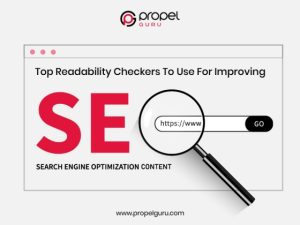Sharing is caring!
One of your objectives when optimizing the SEO of your website is to send Google the right signals so that it can index it more accurately. One of the signals that can result in quicker indexing and better rankings is an optimized XML sitemap.
Google continues to advance in intelligence. It’s not a fortune teller, though. To give bots some direction, it’s occasionally necessary to provide a little assistance to search engines. That is what XML sitemaps accomplish.
XML Sitemaps is one of the surefire ways for crawlers to reach your website content quickly and help your content to be easily discovered by Google. XML sitemaps can help your content get indexed faster if you own a large website with dynamic content. But when it comes to boosting SEO key performance indicators (KPIs), businesses should know the intricacies of effectively implementing and optimizing XML Sitemaps. And this is where Propel Guru, a leading SEO consultancy partner, can help.
Let’s now explore the ins and outs of sitemaps, the best practices of XML Sitemaps, and discuss their significance for SEO.
What is an XML Sitemap?
An XML sitemap can be compared to a website’s architectural design. That blueprint provides a direct link to Google, the leading search engine. The main objective is to make it simpler for Google to index your XML sitemap.
Because it makes pages on your website easier for Google to find, an XML sitemap improves SEO. The main factor used by Google to rank the pages of your website is that. After all, one of the keys to a successful SEO campaign is regular upkeep and updating of your website.
Technically, search engines scan websites for.txt files and meta-tags. With a rating that emphasizes the significance of the content concerning the search query, it primarily segments the relevance of data. Now that we’ve established what XML sitemaps are let us take a close look at the best practices to optimize them.
How to create an XML Sitemap?
An XML sitemap can be created in a variety of ways. Even if a platform does not already include this functionality, it is simple to build one from scratch and benefit from it.
A sitemap must be updated automatically whenever a new page is added to your website or when existing pages are changed, so it is important to understand that it is not a static file.
Because of this, you ought to look for automated sitemap creation processes. The best way to create a sitemap for a non-WordPress website is to search Google for plugins or programs that are integrated with your platform and can produce sitemaps under Google’s guidelines.
There are numerous plugins available to you for WordPress websites, and you can optimize your XML sitemap using Yoast SEO, or you can plan on talking to the top digital marketing agency to get everything right.
What Should XML sitemap Include For Maximum SEO?
Before diving into the implementation specifics, it’s critical to comprehend what your XML sitemap should contain for the best SEO results.
The plugins will automatically include all of your website’s pages, posts, tags, archives, media, etc., but for SEO purposes, this is not what we want. The following pointers for sitemap optimization are crucial:
- The inclusion of pages in your sitemap is exceptionally crucial for your website. These pages include high-quality content that will most likely bring organic traffic to your website.
- Remove pages that have duplicate content and thin content. You should avoid adding low-quality pages to search engines’ indexes when optimizing a website for them. It’s not a numbers game; instead, what matters is the number of “good” pages in the index, not the number of pages overall.
By “no-indexing” the pages or adding them to a category and excluding that category (and the associated pages) from the sitemap file, you can effectively distinguish between your “good pages” and the ones you don’t want to include in your sitemap.
- Sort sitemaps into sub-sitemaps. This way, sitemaps become small and faster to process.
- Have a separate sitemap for your videos & add your sitemaps in robots.txt. Adding the location of your sitemap to help search engines find your sitemap file easier.
- Only URLs that Google can access should be listed. Do not include password-protected pages, robot-blocked, or otherwise inaccessible in the sitemap.
- Make sure your XML Sitemap contains the “last modification time” field, a value that informs Google of the most recent modification time for a page. This is helpful if you want Google to re-index some of your website’s pages.
Conclusion
Your sitemap should be able to efficiently track your activities to ensure that all of your strategies are effective. If you want to optimize for SEO, you can hire the top SEO Services provider to make things easier for you. Thanks to the era of digital marketing, you can practically track and monitor every website metric.
A dynamic XML sitemap should be present on your website. Make it simpler to navigate, and add more details about content and structure. This will increase the visibility of your site in search engine indexes. You can continue making informed decisions to enhance your sitemap and prepare for the latest SEO techniques.
Want to boost your SEO to increase your website traffic like never before? We at Propel Guru provide world-class SEO Consultancy Services to help you optimize & configure your website sitemap to significantly improve how search engines and visitors find, navigate and rank your website in search results. Contact our top SEO consultants now!

Ajay Dubedi
CEO & Founder
15+ years leading business operations and client management in the segments of digital marketing and CRM. Driven by test-driven development paradigms, and exceedingly collaborative across all disciplines (from stakeholders to product to design to development to users – and back again).
Hire the best Digital Marketing Company from Canada. Choose certified Digital Marketing Specialists from Propel Guru now.



